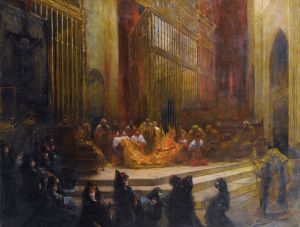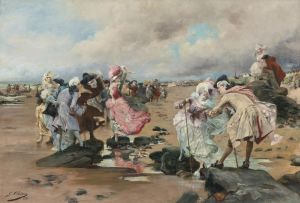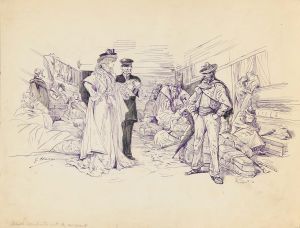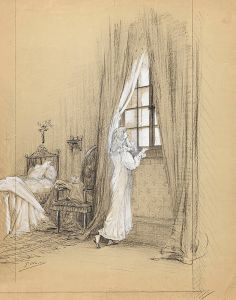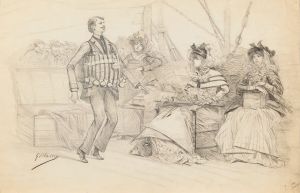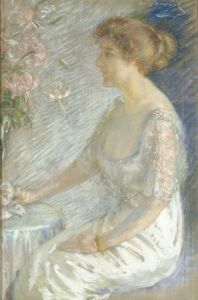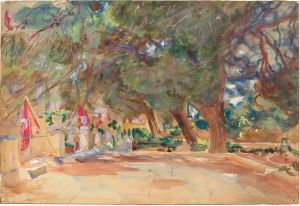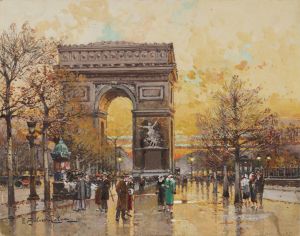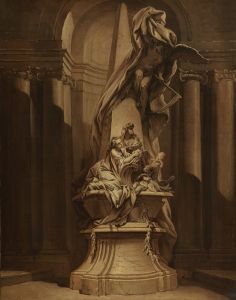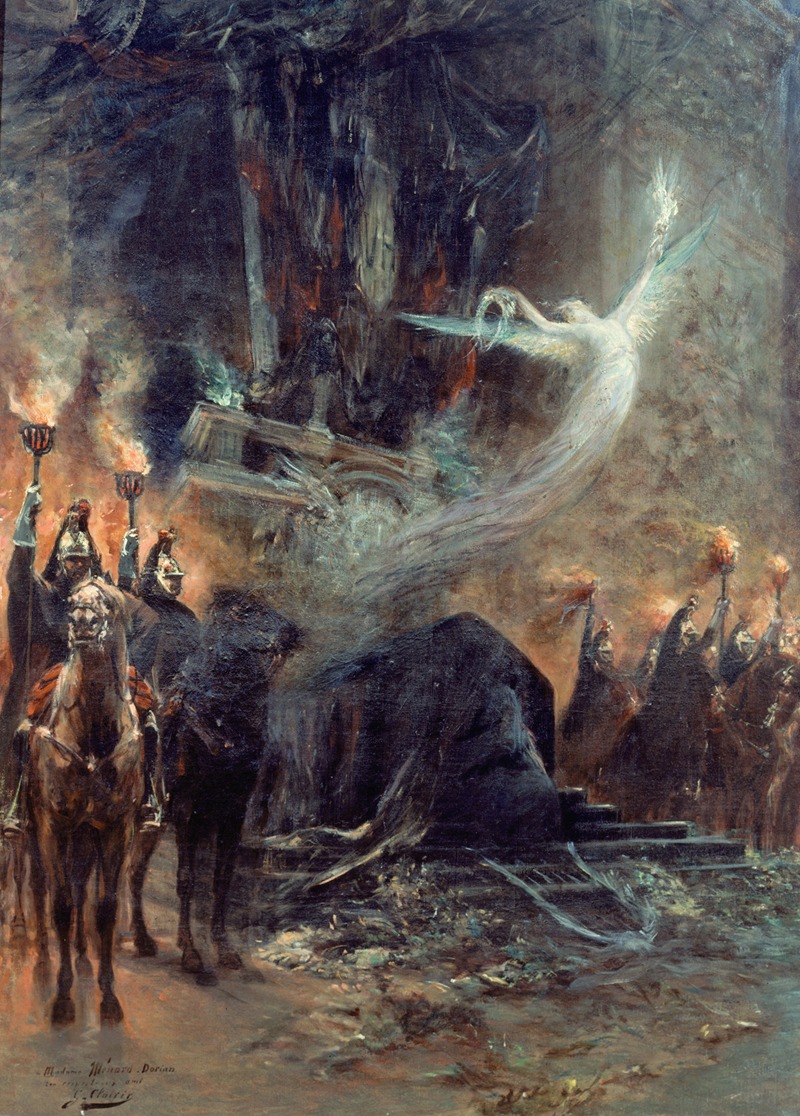
Funérailles de Victor Hugo – la veillée sous l’arc de triomphe
A hand-painted replica of Georges Jules Victor Clairin’s masterpiece Funérailles de Victor Hugo – la veillée sous l’arc de triomphe, meticulously crafted by professional artists to capture the true essence of the original. Each piece is created with museum-quality canvas and rare mineral pigments, carefully painted by experienced artists with delicate brushstrokes and rich, layered colors to perfectly recreate the texture of the original artwork. Unlike machine-printed reproductions, this hand-painted version brings the painting to life, infused with the artist’s emotions and skill in every stroke. Whether for personal collection or home decoration, it instantly elevates the artistic atmosphere of any space.
Georges Jules Victor Clairin, a notable French painter of the 19th century, is recognized for his historical and genre paintings, as well as his portraits. One of his significant works is "Funérailles de Victor Hugo – la veillée sous l’arc de triomphe," which translates to "The Funeral of Victor Hugo – the Vigil under the Arc de Triomphe." This painting captures a poignant moment in French history, reflecting the national mourning for one of France's most esteemed literary figures, Victor Hugo.
Victor Hugo, a towering figure in French literature, passed away on May 22, 1885. His death marked the end of an era, as he was not only a prolific writer but also a political figure and a symbol of the Romantic literary movement. Hugo's works, including "Les Misérables" and "The Hunchback of Notre-Dame," had a profound impact on literature and society, addressing themes of justice, humanity, and social reform.
The French government decided to honor Hugo with a national funeral, a testament to his influence and the deep respect he commanded. The funeral was held on June 1, 1885, and it was a grand event attended by thousands of people. The procession began at the Arc de Triomphe, a monument symbolizing French national pride and military victories, and proceeded to the Panthéon, where Hugo was interred.
Clairin's painting depicts the vigil held under the Arc de Triomphe, capturing the solemnity and grandeur of the occasion. The Arc de Triomphe, draped in black, serves as a backdrop to the gathering of mourners who came to pay their respects. The composition of the painting reflects the somber mood, with figures depicted in subdued colors, emphasizing the collective grief and reverence for Hugo.
The painting is notable for its historical accuracy and attention to detail, which are characteristic of Clairin's work. He was known for his ability to convey the emotional depth of his subjects, and in this painting, he successfully captures the national sentiment of mourning and respect. The use of light and shadow in the painting enhances the dramatic effect, drawing the viewer's attention to the central figures and the monument itself.
Clairin's portrayal of this significant event not only serves as a historical record but also as an artistic tribute to Victor Hugo's legacy. The painting is a reflection of the cultural and historical context of the time, illustrating the deep connection between art and society. Through his work, Clairin contributes to the preservation of French cultural heritage, ensuring that the memory of Hugo's contributions continues to be celebrated.
In summary, "Funérailles de Victor Hugo – la veillée sous l’arc de triomphe" by Georges Jules Victor Clairin is a significant work of art that captures a defining moment in French history. It serves as both a tribute to Victor Hugo and a testament to the enduring power of art to commemorate and honor influential figures in society.







